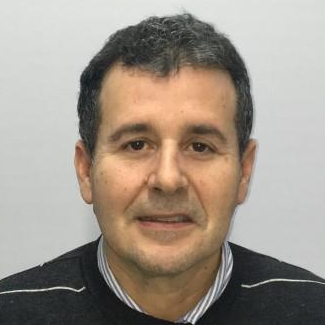Remote Sensing Techniques for Field and Laboratory Testing in Soil and Rock Mechanics
A special issue of Remote Sensing (ISSN 2072-4292). This special issue belongs to the section "Engineering Remote Sensing".
Deadline for manuscript submissions: closed (31 October 2021) | Viewed by 661
Special Issue Editors
Interests: rock mechanics and geotechnical engineering at large
Interests: rock mechanics; landslides; infrastructures; remote sensing; geotechnical engineering
Special Issues, Collections and Topics in MDPI journals
Special Issue Information
Dear Colleagues,
We would like to invite you to contribute to a Special Issue of Remote Sensing specially focused on the use of novel remote sensing techniques for the development of geotechnical tests on field and laboratory environments.
Several research techniques based on remote sensors, developed in other fields of knowledge such as geophysics or materials science, can be nowadays applied to geotechnical engineering, both to characterize the intact rock and soil samples in laboratory (e.g. physical and mechanical properties, strength and deformation) and the rock mass and soil in the field (e.g. rock mass structure, geomechanical characterization, weathering and also strength and deformation, preload and loading tests). Some of these testing methods that use sensors are cited as follow.
- Microtremors technique is used for rock mass classification, faults and fractures detection, recognition of voids, bedrock depth evaluation, identification of rock mass characteristics among other applications at field and laboratory.
- Acoustic emission testing detects and monitors the emission of ultrasonic stress waves from localized sources when a material deforms under stress. This technique can be performed in a laboratory and on field.
- The presence of water inside rock and soil specimens and its distribution can be obtained by using the Resonance Imaging Technique (RMI). Particularly, this technique allows to detect the hydrogen nuclei (protons, 1H) of water and their corresponding energy states.
- Infrared thermography also can be proposed for the study of rock masses (e.g. estimation of the cooling rate index or integrity assessment of rock mass) and characterization the intact rock and soil samples (e.g. porosity assessment).
- Optical methods, such as holographic interferometry and more specifically, real-time laser holography, has been applied in various fields of science and engineering. One of the most important purposes of this optical technique is the capability of measuring displacement of any surface with a high accuracy without emplacing any gauges or another contact device.
- 3D contactless Measuring System and borehole camera can be used to determine the discontinuities features of rock masses and to logging soil properties.
- Multispectral analysis is a widely used technique in photogrammetric and remote sensing applications. The use of Terrestrial Laser Scanning (TLS) in combination with images is becoming increasingly common. In fact, it can be applied to rock face characterization, quantification of rock mass weathering, discrimination between sedimentary rocks, analysis of intact rock bridges and rock mass fragmentation and others.
Accordingly, submissions are encouraged to cover these topics understood in a broad sense in its application to rock mechanics and geotechnical engineering.
Prof. Dr. Miguel Cano
Prof. Dr. Roberto Tomás
Prof. Dr. Leandro R. Alejano
Guest Editors
Manuscript Submission Information
Manuscripts should be submitted online at www.mdpi.com by registering and logging in to this website. Once you are registered, click here to go to the submission form. Manuscripts can be submitted until the deadline. All submissions that pass pre-check are peer-reviewed. Accepted papers will be published continuously in the journal (as soon as accepted) and will be listed together on the special issue website. Research articles, review articles as well as short communications are invited. For planned papers, a title and short abstract (about 100 words) can be sent to the Editorial Office for announcement on this website.
Submitted manuscripts should not have been published previously, nor be under consideration for publication elsewhere (except conference proceedings papers). All manuscripts are thoroughly refereed through a single-blind peer-review process. A guide for authors and other relevant information for submission of manuscripts is available on the Instructions for Authors page. Remote Sensing is an international peer-reviewed open access semimonthly journal published by MDPI.
Please visit the Instructions for Authors page before submitting a manuscript. The Article Processing Charge (APC) for publication in this open access journal is 2700 CHF (Swiss Francs). Submitted papers should be well formatted and use good English. Authors may use MDPI's English editing service prior to publication or during author revisions.
Keywords
- Rock Mechanics
- Rock mass
- Intact rock
- Soil Mechanics
- Geomechanical characterization
- Laboratory testing
- Field testing
- Remote Sensors
- Monitoring
- Rock slopes







